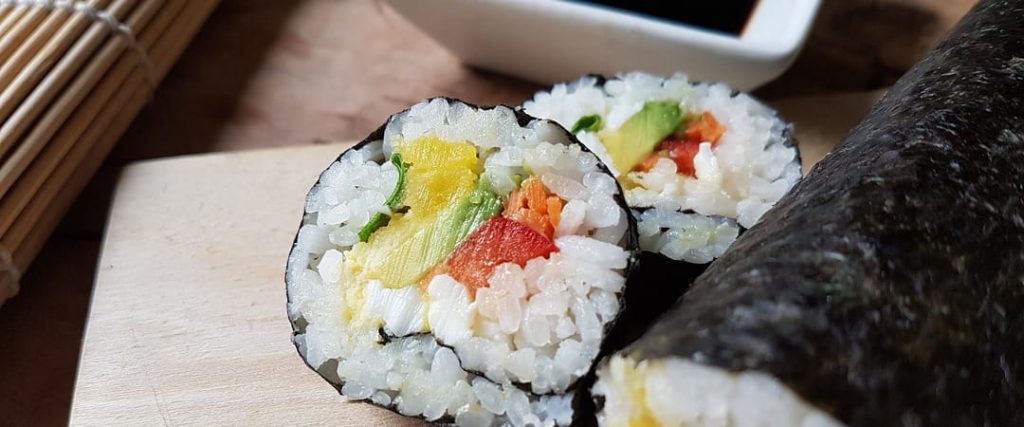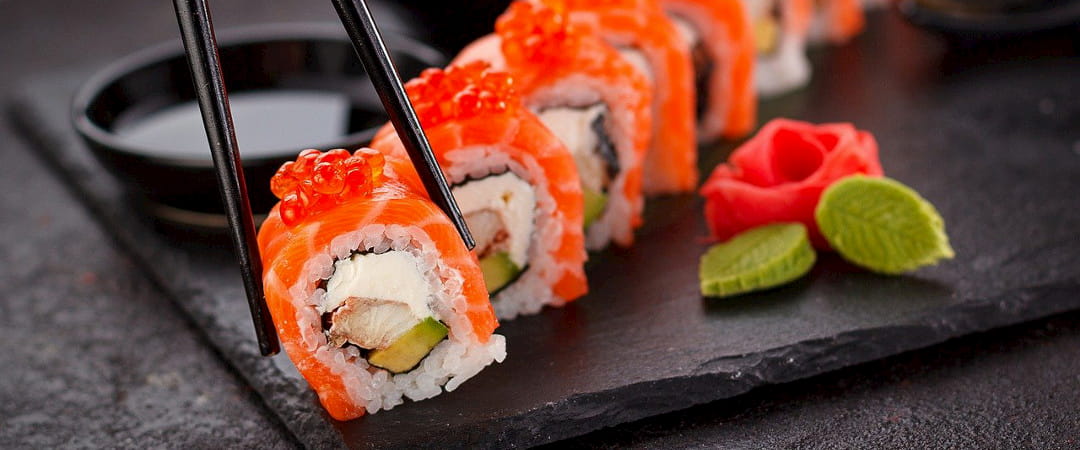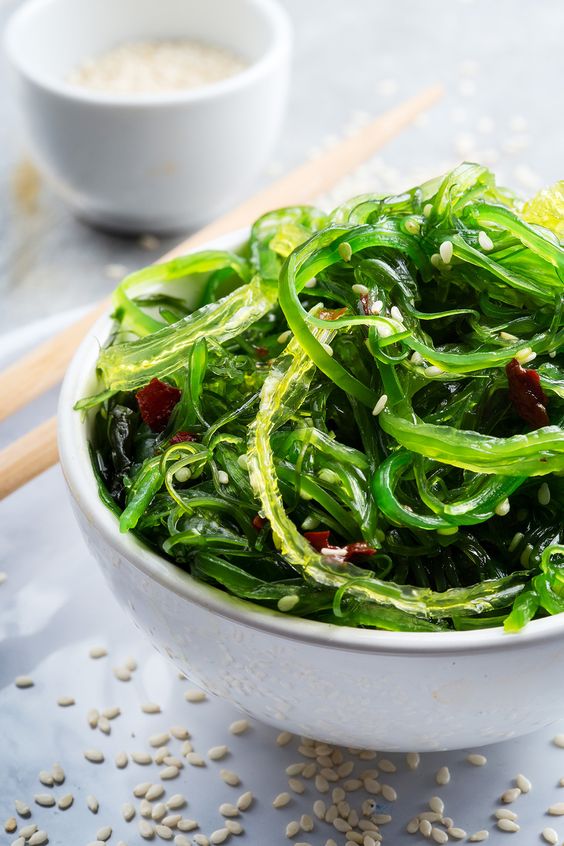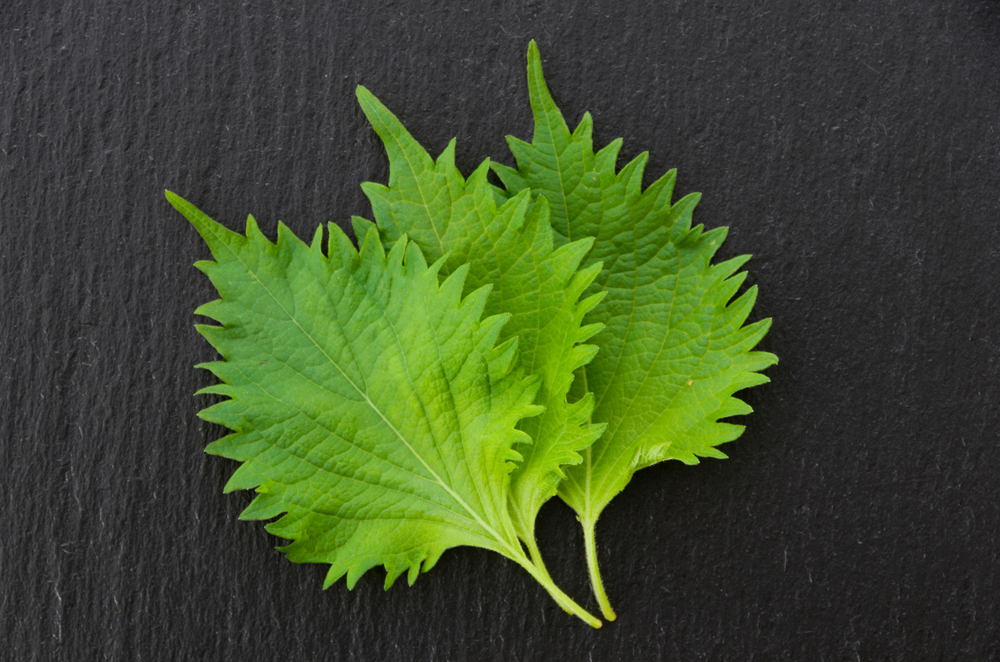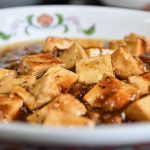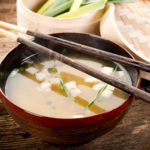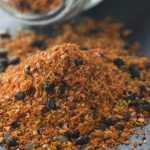A few days ago we talked about the types of seaweed that can be used to prepare sushi, and now we want to focus on one of them, the most common: nori seaweed. Why “nori”? Nori” is a Japanese term used to refer to the edible varieties of seaweed. And by “nori seaweed” we mean the sheets of seaweed that are commonly used for making sushi. However, as we have already learned, food innovation has made it possible to find this ingredient in many other formats and presentations, such as snacks. Below, we will discover its nutritional properties, its health benefits and where we can buy this type of nori seaweed.
Properties of nori seaweed
Also known as “sea ovo”, nori seaweed is an excellent source of vitamins, minerals, proteins, carbohydrates and chlorophyll. We know that seaweed is one of the healthiest ingredients par excellence, which is why it is always present in the vast majority of the world’s cuisine. Without going very far, we find it in Galician cuisine. For this reason, its consumption in Japanese culture exceeds all expectations. Nori seaweed is a very versatile food that can be found in sheets or flakes. In this sense, the seaweed is used not only to roll sushi, but also as an ingredient in salads, as a topping in miso soups (a very common dish in the autumn-winter season) and finally as a snack. A snack that many have incorporated into their daily diet. It is also a highly recommended ingredient for the diet of sportsmen and women.
To benefit from the properties of nori seaweed, we must be able to recognise a quality seaweed. In this regard, experts recommend taking into account: its origin and cultivation, its texture (a good seaweed must be homogeneous), its intense green colour, its drying (we must not forget, as we mentioned previously in one of our articles, that this type of seaweed is treated by baking at a high temperature to achieve that dry, crunchy touch with a rough, smooth layer on one side and the other) and its intense shine. The fulfilment of these characteristics will confirm that we are dealing with a good quality nori seaweed and that therefore its properties are maintained.
Buy nori seaweed: prices and various presentations
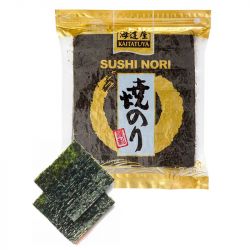
Alga Nori Sushi Gold Mitades 100 Hojas (KAITATUYA) 140g
22,19 €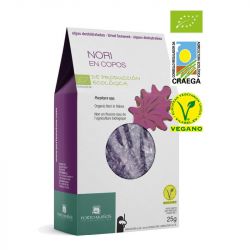
Alga nori en copos ECO (PORTO-MUIÑOS) 25g
4,65 €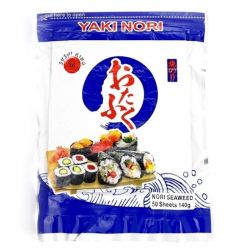
Alga yaki nori sushi 50 Hojas Silver (SUSHI KING) 140g
11,95 €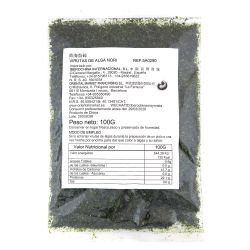
Alga nori en virutas 100g
6,69 €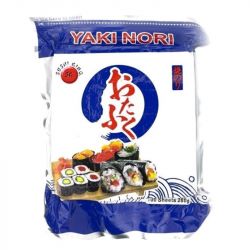
Alga yaki nori sushi 100 hojas Silver (SUSHI KING) 280g
24,95 €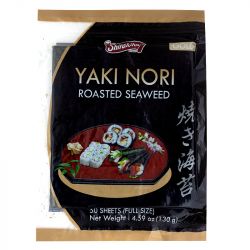
Alga nori sushi 50 hojas Gold (SHIRAKIKU) 130g
12,35 €
Alga nori tostada en tiras 100g
6,19 €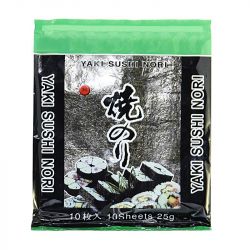
Alga yaki nori suhi 10 hojas Gold (SUSHI KING) 25g
4,07 €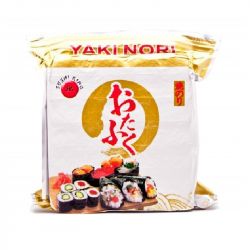
Algas Nori sushi Gold (SK). 100 hojas
25,95 €
Benefits of nori seaweed
When nori seaweed is of good quality and meets the properties mentioned above, we can say that we will have some healthy benefits for our body. As a source of vitamin A, we will be helping the formation of mucous membranes, health of our eyes, skin, nails, hair, teeth and bones; as vitamin B, among which we find the B1, B2 and B3, we will help a good metabolism and proper functioning of the nervous system; vitamin C, will be necessary for our welfare and especially in the coldest season of the year. Nori seaweed is also rich in minerals (calcium, iodine, iron, potassium and magnesium), proteins, carbohydrates and chlorophyll. It is therefore an ideal food for: the elimination of body fat, prevention of arteriosclerosis, as an aid against hypertension and asthenia; it is a digestive ingredient, which also helps to strengthen nails and hair, as well as allowing the elimination of heavy metals from the body such as mercury. Finally, it is also said to be a food that helps to improve thyroid activity.
Where is this seaweed grown?
The nori seaweed par excellence is cultivated in the seas of Japan. In particular, the most renowned areas for this type of cultivation are the Ariake Sea, known as the largest salt marsh in Japan, a small sea located on the island of Kyushu; and the Seto Inland Sea, a sea in the south of Japan that separates the islands of Honshu, Shikoku and Kyushu. Both areas are noted for their great biodiversity and are home to some of the best nori seaweed in the world.
If we have to talk about two key factors for the good cultivation of nori seaweed, these would be the water temperature and the sustenance/feeding of the seaweed. With regard to temperature, experts confirm the importance of not exceeding 23 degrees Celsius. Unfortunately, climate change is not making it easy. Every year the temperature of the Pacific Ocean rises, which means a progressive warming of the water and therefore a shortage in the proliferation of this type of algae in the aforementioned areas. On the other hand, fertilisers. Good agricultural practices are leading to a reduction in the use of fertilisers in the fields, an essential element for the feeding of seaweed. For cultivation, nori seaweed is hung on poles and allowed to grow in the wind in order to enhance its flavour. The ideal time for cultivation is during the cold winter nights.
How the nori seaweed for sushi is made
Interesting video from the DMAX channel, where we can see how nori seaweed is cultivated and the route it takes from the sea to our kitchens.
Nori seaweed recipes
We show you some recipes with nori seaweed:

